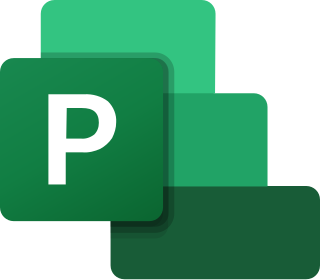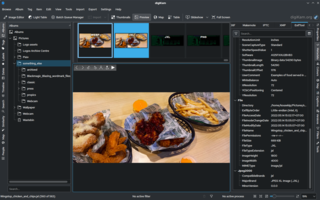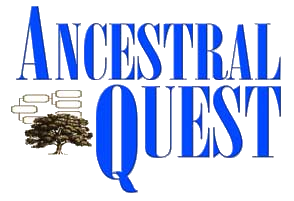This article needs additional citations for verification .(April 2017) |


Genealogy software is computer software used to record, organize, and publish genealogical data.
This article needs additional citations for verification .(April 2017) |


Genealogy software is computer software used to record, organize, and publish genealogical data.
At a minimum, genealogy software collects the date and place of an individual's birth, marriage, and death, and stores the relationships of individuals to their parents, spouses, and children. Some programs are more flexible than others in allowing for the input of children born out of wedlock or for varying types of spousal relationships. Additionally, most genealogy programs handle additional events in an individual's life, notes, photographs and multimedia, and source citations. Genealogy software programs can produce a variety of graphical charts and text reports, such as pedigree charts, ahnentafel reports, and Register reports. Some desktop applications generate HTML pages for web publishing; there are stand-alone web applications, as well. Most genealogy programs can import and export using the GEDCOM standard.
There are also some programs that allow users to create Genograms which can be used by scientists, social workers, doctors, and others to get a graphical view of additional information.
Some programs include additional fields relevant to particular religions. Others focus on certain geographical regions. For example, having a field for the family's coat of arms is only relevant if the family comes from a part of the world that uses them.
While most programs and applications are desktop-based, there are a number of web-based products in the genealogy software market.
Many genealogy applications focus on data management in that they allow users to manage all the information they collect on individuals, families, and events. Other tools available to the genealogist include research management tools, mapping tools, charting programs, and web-publishing programs.
Most genealogy software allows export of data in GEDCOM format, which can then be shared with people using different genealogy software. Some genealogy applications use GEDCOM internally and therefore work directly with GEDCOM data. Certain programs allow the user to restrict what information is shared, usually by inhibiting export of some or all personal information about living people for privacy reasons.
FamilySearch GEDCOM, or simply GEDCOM, is an open file format and the de facto standard specification for storing genealogical data. It was developed by The Church of Jesus Christ of Latter-day Saints, the operators of FamilySearch, to aid in the research and sharing of genealogical information. A common usage is as a standard format for the backup and transfer of family tree data between different genealogy software and Web sites, most of which support importing from and exporting to GEDCOM format.
In computing, an icon is a pictogram or ideogram displayed on a computer screen in order to help the user navigate a computer system. The icon itself is a quickly comprehensible symbol of a software tool, function, or a data file, accessible on the system and is more like a traffic sign than a detailed illustration of the actual entity it represents. It can serve as an electronic hyperlink or file shortcut to access the program or data. The user can activate an icon using a mouse, pointer, finger, or voice commands. Their placement on the screen, also in relation to other icons, may provide further information to the user about their usage. In activating an icon, the user can move directly into and out of the identified function without knowing anything further about the location or requirements of the file or code.

PhpGedView is a free PHP-based web application for working with genealogy data on the Internet. The project was founded and is headed by John Finlay. It is licensed under the GPL-2.0-or-later license.

Microsoft Project is a project management software product, developed and sold by Microsoft. It is designed to assist a project manager in developing a schedule, assigning resources to tasks, tracking progress, managing the budget, and analyzing workloads.

RKWard is a transparent front-end to the R programming language, a scripting-language with a strong focus on statistics functions. RKWard tries to combine the power of the R language with the ease of use of commercial statistical packages.
A GIS software program is a computer program to support the use of a geographic information system, providing the ability to create, store, manage, query, analyze, and visualize geographic data, that is, data representing phenomena for which location is important. The GIS software industry encompasses a broad range of commercial and open-source products that provide some or all of these capabilities within various information technology architectures.

In computing, a shell is a computer program that exposes an operating system's services to a human user or other programs. In general, operating system shells use either a command-line interface (CLI) or graphical user interface (GUI), depending on a computer's role and particular operation. It is named a shell because it is the outermost layer around the operating system.

In computing, a news aggregator, also termed a feed aggregator, content aggregator, feed reader, news reader, or simply an aggregator, is client software or a web application that aggregates digital content such as online newspapers, blogs, podcasts, and video blogs (vlogs) in one location for easy viewing. The updates distributed may include journal tables of contents, podcasts, videos, and news items.

ArcGIS is a family of client, server and online geographic information system (GIS) software developed and maintained by Esri.
A personal wiki is wiki software that allows individual users to organize information on their desktop or mobile computing devices in a manner similar to community wikis, but without collaborative software or multiple users.

An image organizer or image management application is application software for organising digital images. It is a kind of desktop organizer software application.

Gramps, formerly GRAMPS, is a free and open-source genealogy software. It is developed in Python using PyGObject and utilizes Graphviz to create relationship graphs.
Personal Ancestral File (PAF) was a free genealogy software program provided by FamilySearch, a website operated by the Church of Jesus Christ of Latter-day Saints. It was first released in 1983, last updated in 2002, and formally discontinued in 2013. It allowed users to enter names, dates, citations and source information into a database, and sort and search the genealogical data, print forms and charts, and share files with others in GEDCOM format. PAF also linked images and other media files to individual records.
A desktop environment is a collection of software designed to give functionality and a certain look and feel to an operating system.
This article compares several selected client-based genealogy programs. Web-based genealogy software is not included.
The Master Genealogist (TMG) is genealogy software originally created by Bob Velke for Microsoft DOS in 1993, with a version for Microsoft Windows released in 1996. Data entry was customized through the use of user-defined events, names, and relationship types. Official support for TMG ceased at the end of 2014. Informal support continues through a number of online user groups.
A software widget is a relatively simple and easy-to-use software application or component made for one or more different software platforms.

Ancestral Quest (AQ) is a genealogy software application for Microsoft Windows developed by Incline Software, LC. It features data entry with sourcing capabilities and scrapbook extensions; a print engine for standard or custom charts and reports; a web page creator; a collaboration engine; and an extension tool for other genealogy databases.
MacFamilyTree is a commercial genealogy program for macOS which allows users to build family trees and document genealogical research by adding data about family members including pictures, documents, and sound clips. It provides integration with iCloud to synchronize data across multiple devices and features the ability to generate and publish HTML web pages from saved family trees.

HuMo-genealogy is a free and cross-platform web application for displaying and editing genealogical data on the Internet. HuMo-gen is written in PHP and is under the GPL-3.0-only license. HuMo-gen supports UTF-8 and is bi-directional. The project was founded in 1999 by Huub Mons in the Netherlands. It is now developed by Huub Mons and Yossi Beck with contributions of other users. Since March 2010 HuMo-gen is hosted on SourceForge.